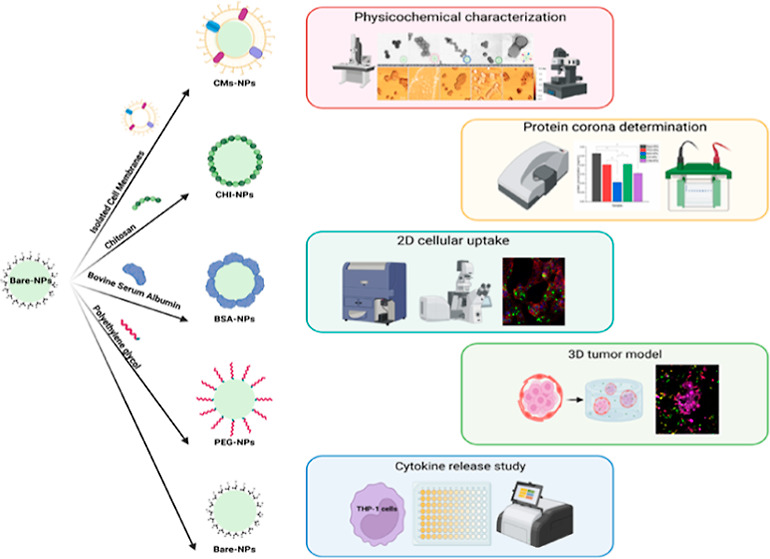- Record: found
- Abstract: found
- Article: found
Exploring the Impact of Nanoparticle Stealth Coatings in Cancer Models: From PEGylation to Cell Membrane-Coating Nanotechnology

Read this article at
Abstract

Nanotechnological platforms offer advantages over conventional therapeutic and diagnostic modalities. However, the efficient biointerfacing of nanomaterials for biomedical applications remains challenging. In recent years, nanoparticles (NPs) with different coatings have been developed to reduce nonspecific interactions, prolong circulation time, and improve therapeutic outcomes. This study aims to compare various NP coatings to enhance surface engineering for more effective nanomedicines. We prepared and characterized polystyrene NPs with different coatings of poly(ethylene glycol), bovine serum albumin, chitosan, and cell membranes from a human breast cancer cell line. The coating was found to affect the colloidal stability, adhesion, and elastic modulus of NPs. Protein corona formation and cellular uptake of NPs were also investigated, and a 3D tumor model was employed to provide a more realistic representation of the tumor microenvironment. The prepared NPs were found to reduce protein adsorption, and cell-membrane-coated NPs showed significantly higher cellular uptake. The secretion of proinflammatory cytokines in human monocytes after incubation with the prepared NPs was evaluated. Overall, the study demonstrates the importance of coatings in affecting the behavior and interaction of nanosystems with biological entities. The findings provide insight into bionano interactions and are important for the effective implementation of stealth surface engineering designs.
Related collections
Most cited references66
- Record: found
- Abstract: not found
- Article: not found
Analysis of nanoparticle delivery to tumours
- Record: found
- Abstract: found
- Article: not found